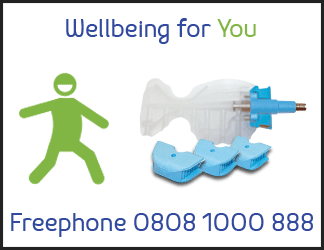
Dr James Tomlinson believes relying on just plain eyesight is not good enough for the health and wellbeing of clinicians and their patients. 
Working in dentistry, maintaining a healthy work/life balance is never easy, but it’s something that is very important and often overlooked. I’m not sure I have managed to achieve this adequately for myself over the years:, far too much work and not enough relaxation. It’s all about taking simple steps to ensure your working environment has your health in mind, such as not overloading your appointment book or working extra-long hours and making sure you take adequate rest.
Being above average height (I’m 6’ 4’’), I also realised early on in my career that dentistry is not an easy job for tall people. Your working posture is so important, especially when you’re tall, so I made sure that I invested in not only comfortable seating but a pair of high-quality loupes and a light.
For maximum comfort when seeing more
Dentistry is a very demanding job and gaining visual clarity across the entire clinical field can be a concern for clinicians as they strive to maintain maximum visual clarity and comfort. Working with a combination of loupes and a light has without doubt enabled me to improve my clinical results whilst adopting the correct working posture. I believe this is a prime reason why I’ve never had to take any time off work with neck or back problems – and considering I’ve been practising for 38 years that really tells you something.
Having worn loupes for 20 of these years and now onto my third pair (ExamVision 4.6x Kepler loupes from Evident), being measured correctly and determining the following have been critical to this success:
- Working distance – the distance between your eyes and the patient’s mouth
- Field of view – the area that is visible and in focus when looking through the loupes
- Depth of field – the depth area that is visible and in focus
When it comes to the field of view, the larger the better, as there is less need to keep moving your head around. Loupes with a lower magnification have a larger depth of field, and vice versa, so when I recently progressed to a 4.6x, it felt a little different adjusting to my new loupes as the depth of field is slightly more restricted with a higher magnification.
If ever I need to improve the clarity at any time, what I don’t do is bend forward. Instead, I pull back a little from the patient, keeping my back straight at all times. Wearing loupes encourages you to do this rather than being hunched up in a bent position all day long, which so many clinicians without loupes find they have to adopt.
Without good vision, quality dentistry is impossible and physical stress unavoidable. For more key reasons to use loupes and a light, read my next blog ‘Invest in your eyes for the future’, available on June 21st, 2017.
To read part 2 of my journey into finding loupes, click here.
To find out more about selecting the right pair of loupes for you, click here and we’ll be in touch with our recommended solutions.
Facebook: Evident
Twitter: @EvidentDental
#livelifedental
Clinical Director James Tomlinson B.Ch.D. MFGDP(UK) M.Med.Sci (Oral & Maxillofacial Implantology) Specialist in Oral Surgery






[…] To read part 1 of my journey to find loupes, click here. […]